(PAGE 3):

(PAGE 6):

(PAGE 7):

SPORTS (PAGE 8): BIFU


(PAGE 3):

(PAGE 6):

(PAGE 7):

SPORTS (PAGE 8): BIFU

By Julee Jiang and Olivia Ma
Editors-in-Chief

pie chart for whether election results were expected or not
As the 2024 United States presidential election draws closer, students and staff at BASIS Independent Fremont Upper are buzzing with mixed emotions. While some are deeply invested in the outcome, others are detached from the political fray. However, one sentiment is clear: the stakes feel higher than ever.
“I’m excited to see what happens and what the future of our country looks like,” said Romil Bhatt (12). “It’s really scary for some so I empathize with everyone’s feelings about it, especially with post-Roe America being on the line. That’s a scary thought.”
Bhatt’s concern about abortion reflects a larger trend on campus. In a recent poll, many students identified abortion as one of their top three issues, with climate change and topics such as the economy, foreign policy, and gun policy close behind.
Among students who are politically engaged, there is a shared sense of frustration about how issues are being addressed.
Citing climate change as one of the most pressing concerns of her generation, Elizabeth Cao (7) criticized the inaction of the government to combat climate change.
“They should work on actually putting in the effort to end the fossil fuel industry and promote clean energy,” said Cao. “It’s not enough to just say it—[they] should really grow [their] plans.”
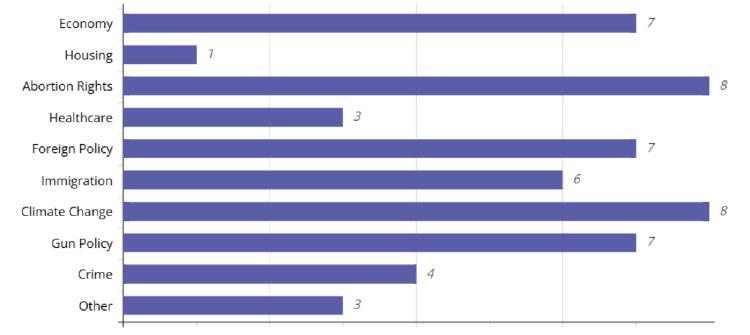
For others, their focus lies in issues beyond environmental ones.
It’s been over two weeks since the 2024 U.S. election results were determined, and news outlets projected Donald Trump to be the 47th president-elect. For the few days after November 5th, students took to social media and expressed both celebratory and somber statements, as Instagram stories quickly became riddled with reposts of Vanity Fair and The New York Times editorials.
Student reactions to the results were split, regardless of political opinion. For many, the final results were surprising, with some citing Harris’s youth-focused social media campaigns over the summer. While some reported doubtful expectations for the next four years, others wanted to remain somewhat hopeful.
“Living in the Bay Area as the son of business owners, I see firsthand how the economy affects people,” said Soorya Ignatius (12). “Foreign policy is another big concern of mine. I feel that we’re heading into a major conflict in the next four years, with rising tensions in Taiwan and also issues in the Middle East. We need a strong leader.”
Beyond environmental, economic, and foreign policy concerns, students also said they felt political polarization was important.
“If someone from one party has a good idea, someone from the other party has to say no, or they’ll be seen as a traitor,” said Cao.

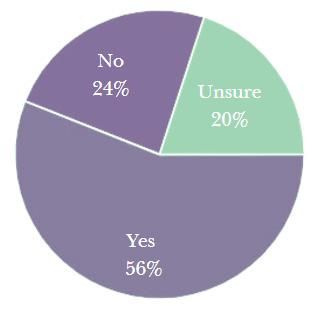
“[I have] lots of feelings,” said Soorya Ignatius (12). “I’m cautiously optimistic, let’s say that, but I’m also very worried.”
According to both surveys conducted by The Yellow Pages, students were rather split on division between supporters of both candidates. Some said that being a united front was most important, while others stood staunchly against those they disagreed with. Regardless of any stance, however, most students seemed to agree on one thing — climate change was not addressed enough throughout the election. With environmental scientists and activists pointing to how little time Earth has left until little can be done to reverse damages, both students and teachers said they were frustrated about politicians’ lack of care for it.
In the only debate held between Harris and Trump during their campaigns in September, moderators only asked one question about climate, with Trump’s response instead being focused on manufacturing jobs.
Students are questioning the future of leadership in the country. While some hold onto hope that new voices who reflect their priorities and values more clearly will emerge in the next election, others have disengaged entirely, skeptical whether their involvement or attention would make a difference.
Amid the turmoil, the election has sparked conversations about the role of young people in shaping the future, centered around civic engagement. “If I could vote, I would do more research, because that’s a responsibility,” said Samuel Yang (11). “It shouldn’t be done because I’m on one side. It should have more thought.”
Staff members are encouraging students to engage with the political process, even if they can’t cast a ballot yet. Mr. Betcher, an English teacher, emphasized the importance of staying informed.
“It’s hard to pay attention when you can’t vote, but it’s your right to be heard on some of these issues. So I would advise participating in the process,” said Mr. Betcher. The outcomes of this election will undoubtedly shape the country’s path for years, and the voices of BIFU’s students show that the next generation is already deeply thinking about what the future should look like, and what role they’ll play in shaping it.
As for campaign strategies, students had critiques on both sides. For Harris, students said they felt she did not have enough time to solidify her own identity as a candidate and go on the offense. For Trump, students cited his controversial human rights stances, including those on abortion and LGBTQ+ rights, and opposition to climate conservation.
Moreover, with Harris joining the circuit four months before the election, and Trump already having been president, students also said the dynamic between the candidates was set before any campaign strategy was implemented.
“In my opinion, [Trump] was running to gain people’s support and interest,” said Thanisha Thambidurai (9), “unlike Harris who had to run to combat people’s inner prejudices and dismissals towards her.”
The most apparent, though, in both before and after surveys, was that students were not completely satisfied with either candidate, and wanted something new. Others said they wanted politicians to be more grounded, and level with their voters more.
Overall, no matter which side of the political aisle students and teachers were on, national unity and genuine politicians seemed to be at the top of people’s hopes for the future.
“[I hope to see] respect,” said an anonymous student, “both for each other and the people they represent.”
By Aaron Ely
Staff Writer
On January 18th, 2021, Arunay, a 12-year-old boy, was swept out to sea by a sneaker wave—a random wave that suddenly surges up the beach much faster than normal—while visiting the beach with his family. Despite extensive search efforts, Arunay was never found.
When Arunay’s family broke this news the close-knit BASIS Independent Fremont Upper community was shaken to its core, as the passing of a fellow student had never happened before. Following this, Arunay’s parents founded the Arunay Foundation, an organization dedicated to spreading the word about sneaker waves and increasing beach safety awareness.
The Arunay Foundation aims to raise community awareness about beach safety using their “three-way approach” — Educate, Equip, and Inform. The Foundation’s first major project was the 100 Ring Campaign, a project with the goal of placing a hundred safety rings, which contain life-saving buoys, on beaches along the Bay Area’s Pacific coast. Currently, they are on their way to placing 1,000 rings. Each safety ring costs over $1000 just to make and install, and acquiring the permits to install the rings on public beaches is a lengthy and difficult process. To acquire these permits, the Foundation works with the California Coastal Commission. Each beach has its own jurisdiction, making it hard to
get permits. To raise money for these rings, and the organization as a whole, the Arunay Foundation accepts donations from ot her organizations and also through their annual walkatho n event.
The Arunay Foundation held its first walkathon on June 5, 2021 at BIFU’s campus, with many students and faculty h aving participated. Since that day, the Foundation has hosted an annual walkathon, now held at Quarry Lakes Regional Park. Sharmistha, Arunay’s mother, provided some information on why this event is held each year.
“So, we plan this event to help the community come together and raise funds for our rings, along with possibly finding more volunteers”, said Sharmistha, Arunay’s mother.
At the walkathon, many people came together to participate in the 5-kilometer or 10-kil ometer walkathon events to honor Arunay’s memory. Numerous booths at the start line allowed people to learn about the Foundation itself, become volunteers, or get educated on beach safety. The event also allows attendants to speak out about beach safety as well.
At the East Bay Regional Parks Department’s Lifeguard Services booth, Aaron Roth, an aquatic assistant at the Lifeguard services, had some quick and easy tips for beach safety.
By Aarna Kamath and Ailsa Wu
The hallways at BASIS Independent Fremont Upper buzz with excitement and chatter as busy Yellowjackets pour out of their first period classes. However, instead of immediately filing out into the quad for AE like usual, some students head to the far corner of the church hallway to buy a quick snack, fueling them for the rest of their long school day. Tucked into the corner next to the MPR entrance sits BIFU’s first-ever vending machine.
The move to finally obtain a vending machine at the upper campus has been made after long deliberation by BASIS staff and years of student requests.
“The students have been asking for a long time, and I couldn’t think of a reason not to do it,” says Ms. Apra, who was a key participant in the decision.
The company C&S Vending Inc. supplied the vending machine to the campus. According to BASIS staff, the company manages all of the snack restocking and collection of payment. Students and teachers may purchase snacks using many payment methods, including coins and cash, as well as contactless methods like Apple Pay. The school takes no monetary involvement but rather manages student usage. The vending machine can be accessed by students during designated times – Early/Late Bird, AE, and lunch – but not during passing periods or office hours to prevent students from missing critical instruction time. Individual teachers decide if students can eat their snacks during class. As for what goes in the machine, Ms. Apra and several other members of BIFU faculty chose from a catalog that the company provided. These decisions were made based on observance of student eating habits and knowledge of student preferences, seen by the popular snacks available such as Hot Cheetos and Nerds Gummy Clusters.
BIFU students responded enthusiastically to the new vending machine. Many students stated that they often feel hungry at school and that the machine was not only an exciting addition but also practical.
“[The vending machine] adds to the high school experience,” added
“Swim as a pair near a lifeguard chair.” Swim with a buddy at all times, within sight of a lifeguard chair.
“Swim where you can stand, stay safe in the sand.” Swim in up to chest-deep water so that you can stand up and call for help if needed.
“Don’t just pack it, wear your life jacket.”
Not only should you bring along a life ja cket to the beach, you should also wear it whenever in the water.
“Reach or throw, don’t go.” In a situation where you see s omeone in the water struggling, try to reach out to them with a floatation device like a pool noodle or a safety r ing. Never try to go into the water to help them.
These tips are easy for people to memorize, and the Lifeguard Services are using these tips to ke ep people safe even without professional Lifeguard training. The Arunay Foundation works hard to make beaches much safer for everyone. They have been making large strides already with their 100 Rings campaign, and through volunteering and fundraising events like the walkathon, they continue to spread the message of beach safety.
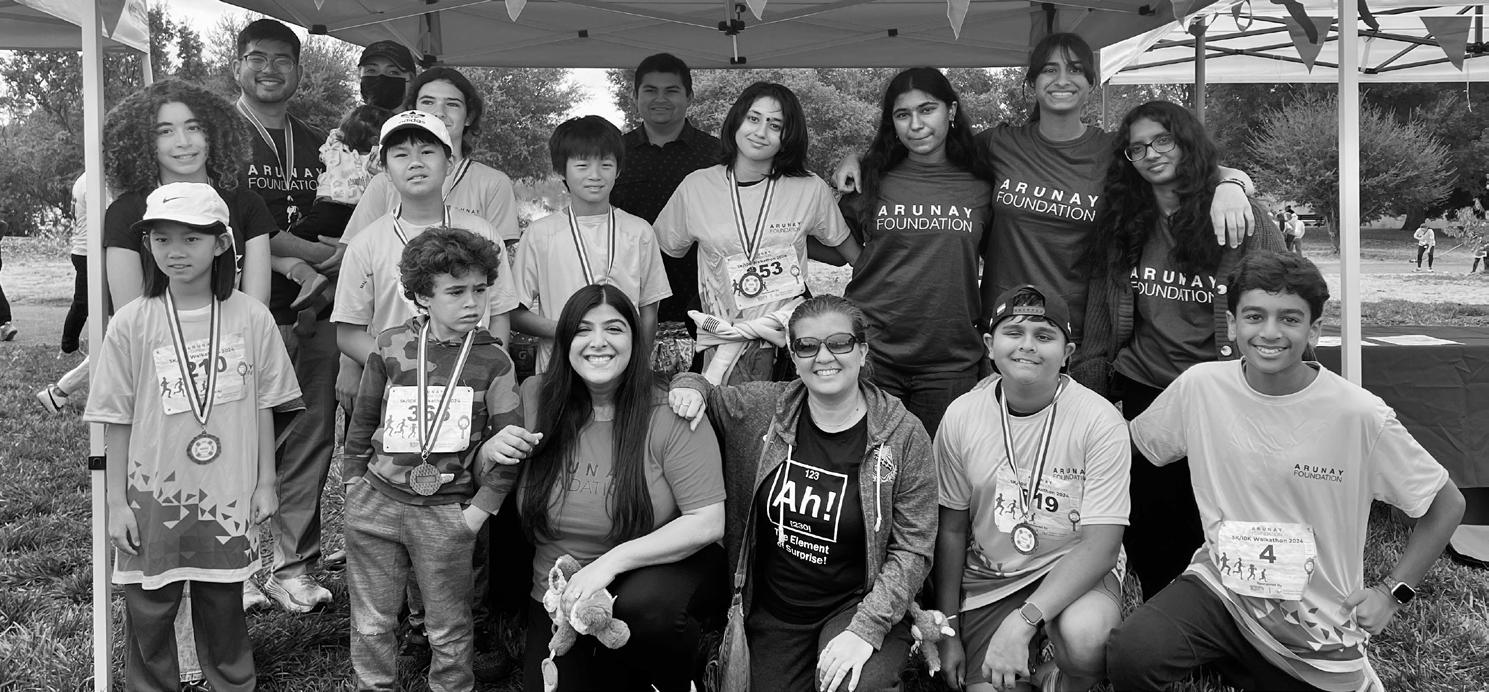
Aaron Ely (9). “I feel like every public school has one.”
Students were often seen gathering around the machine during every break, and many bought from the machine immediately.
“Honestly, I feel like the prices are not too overpriced and not too underpriced. I think [the vending machine] is a cool idea and every school should have one,” said Nick Yin (8).
Sachit Parekh (12) agreed with this sentiment, adding, “The portion size is reasonable for the price.”
While satisfaction with the prices was somewhat predictable, the students’ reaction to the snack varieties was uncertain. However, students largely agreed that the snack options were well-varied and interesting.
“I think it’s a really good blend because they have some unhealthy food like chips and cookies, but they also have healthy stuff like protein bars. It also has a wide variety of flavors like sweet, salty, and spicy,” said Shreyas Jay (11).
While students enjoyed the new addition, a few had reported issues with getting the machine to work, such as getting charged for an item and not receiving it. Currently, our BIF admin is working to fix these problems and ensure that they do not continue.
Overall, the vending machine has been a rousing success.
“I’m really excited because it’s a new interesting addition to the school and I think it gives students something to look forward to,” says Josh Peter (11). “It’s a new change to our school environment, and I think it can definitely positively impact the experience of the students at school.”

By Thanisha Thambidurai News Editor
Fresh out of a club, students sign out of the front office and leave ready to walk home or be picked up, only to realize that it’s dark outside. The sun has already set, and students are faced with another dreary evening, too dark to even take a walk in their neighborhoods. Dejected, they get picked up knowing that it will likely be another evening spent indoors.
Daylight Savings Time (DST), the practice of moving the clock forward by one hour in the spring and returning to standard time in the fall, is designed to maximize daylight during the spring and summer months. Daylight Savings was officially reinstated in the United States in 1987 and has been in effect since. In 2022, the Senate unanimously passed the Sunshine Protection Act, which essentially states the time will remain constant throughout the year. The Sunshine Protection Act of 2023 has stated that Daylight Savings Time will be the constant time, but the bill has not received much media attention.
This year, Daylight Savings began on March 10 and ended on November 3. While it effectively extends the days in the spring and summer, Daylight Savings has come to an end, leaving us with darker evenings in the winter months. Most people will not be active before 7:00 AM, so brighter mornings don’t make a big difference for the average person. Many students, however, are active in the evenings, often with after-school activities.
“I dislike Daylight Savings,” says Madhav Mirmira (9), “because it means the sun sets earlier, and I can’t go outside.”
Mirmira expresses that because the clock is moved an hour back, he is unable to go outside after school. For example, the sunset was at 4:59 P.M. in Central District, Fremont on November 11, 2024. As we approach December, the sun only sets earlier, and the days become decreasingly short. A similar dislike for early sundown timings is expressed by other students, who find it unfortunate that they can’t enjoy their evenings due to the lack of sunshine.
“To be honest, it’s not really fun in the evenings when it’s already dark and you can’t play outside,” says

Brandon Yu (6). “I think it’s, like, not really convenient because it gets dark too early.”
For other students, especially ones who travel long distances, coming home after sunset is dispiriting as being actually tiring.
“It’s depressing to come home when it’s already dark,” says Sharanya Chouhan (10). “It makes you tired even if the time is not that late.” Chouhan shares that the sunshine outside often affects her exhaustion levels, perhaps not physically, but regarding her feelings approaching the evening; these feelings have been supported by previous studies regarding the sun’s effects on one’s mood.
Dr. Jesse Bracamonte, a Mayo Clinic family medicine physician, reports exposure to sunlight can affect serotonin levels in the body. Serotonin, often dubbed the “happy chemical”, is a neurotransmitter that regulates body temperature, sleep, sexual behavior, mood, and hunger while influencing learning, memory, and happiness. Low serotonin levels, according to Bracamonte, can lead to “off” mood cycles and sleep, which can negatively disrupt one’s daily routine. Fewer daylight hours can prevent serotonin molecules from functioning properly.
The end of Daylight Savings Time, one of the causes of darker evenings in the fall and winter months, can decrease productivity and motivation in the evenings and prevent most students from going outside to enjoy their time after school, leaving them upset and hoping for more sunshine. “It’s really sad that you can’t see sunshine early,” shares Yu.
By Sheil Mody and Vera Lin Feature Editor and A&E & Sports Editor

You’ve probably heard the name “Mr. Shapiro” being thrown around by teachers when facing technical problems, but who is this mysterious computer mastermind? Hiding from the chaos in the hallways behind the safety of his office door, Mr. Shapiro plays a critical role at BASIS Independent Fremont — the
technological coordinator. He manages our school’s internet traffic and assists students and teachers alike with technology issues. He’s the one who ensures our SAT, PSAT, and AP exams run smoothly and without interruption, yet there’s a side to him beyond his tech expertise that many don’t know about.
Mr. Joshua Shapiro, born and raised in the Bay Area, has always nurtured his curiosity by tinkering with small items and troubleshooting broken machines. He found himself in technological puzzles from an early age.
“I still remember this day I had the original [Nintendo] Gameboy,” he says. “My mom broke it because she got mad at Tetris.”
But by utilizing his grandfather’s equipment, 18-year-old Mr. Shapiro tactfully soldered out and manipulated a seemingly simple device. It was never simply having the latest gadget; it was about the satisfaction of understanding how things work — and the joy of making them whole again.
“I’ve always liked tinkering with electronics,” he says. “If something breaks open, I like to see internally what’s going on. I like to fix broken things.”
Mr. Shapiro’s interest in repurposing rather than replacement led to him managing an ink and toner replacement business in 2013.
“I started as a delivery driver and then I became the general manager,” says Mr. Shapiro. “In 2010 … I got hired as a delivery driver, and around 2013 I made an offer on the business.”
As Mr. Shapiro immersed himself in the intersection between entrepreneurship and technology, he kept the local community around him at the core of his work. Unlike the rapid business field now — often a daunting space — Mr. Shapiro found solace in the intimate connections he made through talking to the close-knit community of Santa Cruz.
“I liked helping small businesses get off the ground, just trying to make their
daily life better.”
Unfortunately, Mr. Shapiro’s busi ness was one of many small businesses brought to an abrupt halt as COVID-19 flushed out the economy. Yet, similar to fixing a computer malfunction or facilitating school-wide internet, Mr. Shapiro has come to appreciate the process and repurpose his time into other valuable investments in his life.
“Owning a business is great, but it’s also hugely demanding on your time,” says Mr. Shapiro, as he found himself devoting more time to his family after losing his business to COVID and largescale competitors.
“I’d say the happiest days of my life are when I got married and when I had my two children,” says Mr. Shapiro.
He credits his wife and two daughters as the cornerstones of his life and key inspirations.
“I want this world to be here for my children,” remarks Mr. Shapiro on the topic of his ink and toner shop. “[We] so easily like just throw things away... but you can fix these things really easily.”
Channeling his intellectual curiosity, Mr. Shapiro upholds his social outlook strongly to his children. He often converses with his eldest daughter, currently nine years old, about her future amid the rapid advancement of AI and the gradual underappreciation of individuality and uniqueness.
When asked about his guiding principles, Mr. Shapiro shared a perspective rooted in authenticity and resilience.
“Stick with your convictions,” he explains. “Money comes and goes. Material things come and go. Just be true to yourself.”
pen, then so be it,” she said.
By Angela Cao News Editor
Parents are the backbone of the BASIS Independent Fremont Upper community. At the time of its founding, eight years ago, BIFU had few student and teacher resources and established school organizations. Since then, parents have stepped up in every aspect—as volunteers for school events, parent representatives, teachers, staff members, and club advisors. In fact, BIFU parents have been so active in our community that many of them have become familiar faces to BIFU students.
One such parent is Helena Shen, better known at BIFU as Olivia Ma’s (12) mother. Ms. Shen has hosted a variety of events at BIFU. She recently invited guest speakers from Unitree Robotics, an industry leader in building robots, to the school in order to help students widen their horizons. She also works as a parent volunteer, among many others, to organize BIFU events such as the recent Diwali celebration.
Her efforts to build community and growth at BIFU are clear, not just from the effort we see in school but also outside of it. In a Stanford event hosted by the Asian American Scholar’s Forum, celebrating the accomplishments and contributions of Asian Americans to the US and to humanity, I heard Ms. Shen ask a question about how to, as parents, foster the curiosity and the growth of children in STEM schools like BIFU.
Her motivation behind her work and volunteering stems from a deep care for the BIFU community.
“I care about the community very much. Our school is not very big. People are very cozy and we know each other very well. In this environment, if we can all just contribute a little, we can improve the community overall,” said Ms. Shen.
She also shared some of her insights from her contributions to the community.
“As parents, it’s better not just to ask the school to do everything. We work with the school, and as parents, we have more resources to offer. With more volunteers working together, students will be happy, and the school and teachers will feel appreciated,” she said.
Now, the BIFU parents have an established volunteering network for hosting school events.
“Parents have different specialties; we have parents for budgeting, organizing, decorating, and making sure food is on time,” said Ms. Shen.
They also have a network for broader student support.
“We offer help with career guidance. Parents have helped high schoolers find internships. All of the little things, one at a time, are helping our community,” she said.
Another parent, Alyce Moy, has had an immeasurable impact on BIFU. She is on campus more days of the week than she isn’t, leading an astounding four clubs: Model UN, Science Olympiad, Quiz and Science Bowl, and the First Lego League. Ms. Alyce takes all of this on with a full-

time job, three kids, and many other charitable and time-consuming roles outside of BIFU.
Her experience and general knowledge have become invalu able to many students in our community. The time Ms. Alyce has put into her clubs and the improvement of those in her clubs is appreciated by students on campus.
Her benevolence drives her dedicat ion to service.
“When I first joined the BIFU community 8 years ago and talked to other parents, I realized how much I actually related to the kids being a second-generation Asian American myself,” said Ms. Alyce. “I knew what it was like having parents th at were unfamiliar with the American education system and the challenges that kids would deal with. I really wanted to help advocate for the kids and help present them with opportunities that I was able to exp lore when I was in high school.”
She also shared her philosophy on education.
“School shouldn’t just be about test scores and being delu ged with non-stop homework. It’s about disc overy and experiences, and I wanted to e nsure that BIFU students had that. If it mea nt that I had to put in work to make that hap -
Ms. Alyce’s contributions have had an immeasurable impact.
Reflecting on her impact, she said,
“What warms my hear the most is when I see students grow and learn when they push themselves through challenges,” she said. “Seeing how [students] can develop into people that feel you can do more, that’s the impact I want to make.”
Pare nts like Ms. Alyce Moy and Ms. Shen play an instrumental role behind the scenes in the success of BIFU students. BIFU students are at the forefront of their minds, both on and off campus. Their dedication to service deserves wholehearted appre ciation from the BIFU community.

By Sheil Mody and Vincent Yang
Opinion Editor and A&E Editor
It’s November — for freshmen, sophomores, and juniors, this time of year is largely unremarkable, but for seniors, a large elephant has entered the room. The elephant’s name? College applications. At every turn, you can see a stressed-out senior bugging Ms. Shah/Ms. Ye or frantically writing an essay right before their deadlines.
Fortunately, the beast has begun to exit the room as Early Action (EA) and Early Decision (ED) apps have been wrapped up, and the seniors are offered more space to breathe, yet concerns about the remaining applications persist.
“Honestly, I thought it would feel rewarding, but honestly it doesn’t,” said Sachit Parekh (12), regarding EA/ED submissions, “Because now that you have your EAs in, you realize that you have
more applications to send in—more RDs and UCs. I submitted three EAs, but I have a bunch of RDs, so that impending doom kind of set in, and it’s not a pleasant feeling.”
The crux of the college application process is the writing: a 650 word personal statement and a torrent of supplemental essays tailored to each school. Perfecting these essays is imperative, and most seniors agreed it was the toughest obstacle.
“The most challenging part is definitely the writing,” said Izzie Chen (12). “You have to figure out your writing process, your style of writing, and your voice, right? And then your flow, and then getting down your ideas.”
“Personal statement. Hands down,” said Parekh regarding what gave him the

By Emma Ma A&E and Sports Editor

most difficulty. “Just finding a topic was definitely the hardest thing. And like, you keep doubting yourself…can it accurately represent yourself to the admissions officers?”
Clearly, the college application process is no walk in the park. Constant writing and revision along with the much busier schedule constitutes a strenuous balancing act. One senior offered insight on how their understanding of navigating the procedure changed over time.
“Initially, I thought there was a formulaic way of going about essay writing. That’s actually not entirely true,” said Vera Lin (12). “I feel like admission officers do try their best to see the humane side of applicants, that we’re still 17-year-olds unsure of ourselves and trying to explore different domains.”
College apps reflect a sum of one’s high school journey, and some students noted that they could have explored more opportunities during those years.
“...I think I would probably look for more random opportunities, like clubs and stuff, just participate in many more

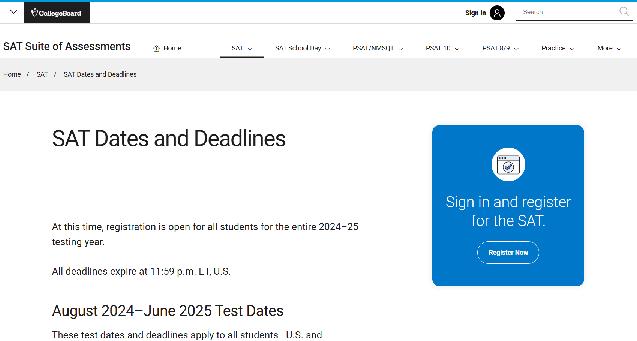
Since its creation in 1926, the Scholastic Aptitude Test (SAT) has been a widely used college entrance exam that helps universities assess applicants for admissions. Each year, high schoolers extensively prepare for this test, aiming to utilize it in their college applications. However, studying for the SAT is notoriously demanding, as students must prepare for a continuously evolving test that is becoming more challenging every year. BIFU, a school known for its academic rigor, is a space where students are even more driven to achieve high scores. As a result at BIFU, the SAT has generated a culture of stress, intense preparation, and reliance on test-prep resources and cram classes.
For many students, SAT preparation begins as early as freshman year, with parents encouraging their children to expose themselves to the test’s content and structure. They may recommend prep books specializing in practice problems similar to the actual test. Online resources like YouTube videos and Khan Academy courses could also be helpful
during the study process. As the test date approaches, students commonly enroll in SAT cram classes or boot camps, where they’ll dedicate several hours to intense study sessions in the final stretch right before the test. These classes demand large financial and energy investments, but they promise significant score increases, realistically with varying results. However, enrolling in these camps is not always necessary for succeeding in the SAT.
“I studied by going to a camp for a little while, but I don’t think that was effective—I think what was effective was just sitting by myself and doing practice tests,” said Selena Peng (11).
Many students choose to use other resources instead, as cram courses often add a lot of extra stress and pressure. Practice tests are available on multiple websites, although the papers offered by the College Board are most likely to have questions that are similar to the official ones. These tests are great for identifying gaps in your knowledge and also familiarizing yourself with the test structure.
“Practice is probably the most helpful because, on the SAT, everything is basically the same but in slightly different flavors, so just practice,” said Bridget Liang (12).
Liang brings up a key point — with standardized testing, the questions are always formatted in a similar way, so as long as you become familiar with all the types, you’ll have a good shot at acing the test. There’s no better way to achieve a high level of familiarization than practicing over and over again until you feel confident that you can take on whatever type of question the SAT throws at you.
“I definitely think taking AP Lang helped a lot. I also took the ACT after I took AP Lang, and I think that went a lot
things so I have a lot more to write about,” said Joshua Ni (12). “Not just like writing about the same research over and over again, which is pretty much what happened. And also maybe try to get some leadership, because it’s pretty important for college essays, especially UCs.”
With all the stress the Common App has hoisted onto the seniors, it is no surprise that many believe it’s not optimally structured.
“I think that it is way too complicated and needs to be simplified. And I feel like supplemental essays should be optional, because I feel like there are too many… for some schools, especially like Stanford, which has like eight,” said Ni.
The college application process is a defining yet grueling battle for seniors, filled with late nights, endless revisions, and moments of self-reflection. With pressures mounting as RD deadlines draw ever closer, the seniors are in the thick of it.
“I mostly feel tired,” said Chen. “The applications are never-ending, and there’s always more.”
better. For that, I just took a bunch of practice tests,” said Joy Wang (12).
The Advanced Placement Language curriculum can strengthen your reading comprehension and retention skills in preparation for the SAT, forcing you to focus on grammar and vocabulary. Wang also mentioned the ACT, which is considered SAT’s “sister test.” In both cases, practice tests seem to be a very capable study method.
The intense culture that surrounds the SAT can be extremely overwhelming, with such a large spotlight being focused on never-ending studying and perfection. It’s no longer merely a test of academic skills, but also one of endurance and resilience.

By Pooja Kanthala and Sachit Parekh
News Editor and News & Sports Editor
On the eighth of November, the entire BIFU campus was adorned with colorful flower chains and designs to honor the traditional Indian festival of Diwali, the festival of lights. All throughout the campus, students and teachers were spotted in traditional Indian attire, from unique lenghas to classy kurtas. The event had been meticulously planned for months to bring an authentic Diwali experience to the school. From delicious Indian snacks to trendy Bollywood music, the event was nothing short of exciting.
The celebration took place during middle and high school lunch. Upon entering the quad, students were given a small bag with three items. A samosa — a pyramid-shaped staple of Indian snacks—filled with a deliciously tangy spicy potato filling, was the first thing many students ate. A singular gulab jamun — a popular Indian sweet made of milk, flour, and a sugary syrup; and a French madeleine cake, were also included in the bag. Stu dents were also able to grab a Frooti, a deliciously sweet mango juice and a popular Indian drink.
while the players paid close attention— there could only be one winner. Rather than having five in a row, the first person to get complete coverage over their card would win the match. Cheers erupted from supporters as one of the contestants won, while others sighed in defeat.
Among the many activities planned for the Diwali celebration was an arts and crafts table that featured painting diyas — an oil lamp that is commonly lit up for Diwali — and a non-per

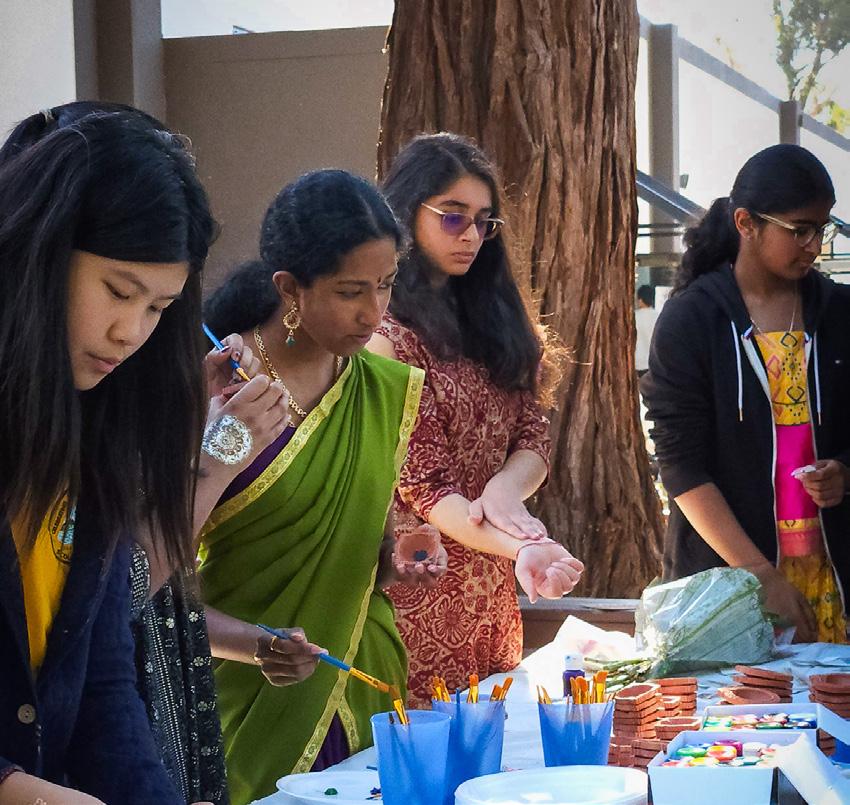
During the first half of the lunch period, a group of around 20 people gathered around the base of the large redwood in the back half of the quad. One of the parent organizers hosted a bingo match, with a 10 dollar Starbucks gift card as a reward for the winner. Spectators anxiously watched the host shout out numbers,
teachers chose individual clay diya and bright and colorful paints — a true testimony to the festival of lights. Additionally, students and teachers chose from unique gold and silver non-permanent tattoo designs similar to traditional designs created through henna — a temporary dye created from leaves used to create designs on one’s skin. Mem-

bers from the BIFU community proudly showcased their unique tattoo designs and colorfully painted diyas.
The main party started when one of the parent organizers brought out the speaker and started blasting classic Bollywood music. In the blink of an eye, the quad’s lawn was covered in a sea of students and teachers dancing, or attempting to dance, in sync with the lead parent dancers. It was a sea of color—the students, teachers, and parents sported shades of red, blue, pink, green, orange, and so many more colors, as joyous smiles gleamed on everyone’s faces.
Deepa Mitta, the lead parent volunteer for the Diwali planning team, had worked with many other parents of BIFU over a month’s span to make this event possible. “We were mostly collaborating [over] WhatsApp,” Mitta said. Weekly 30-minute meetings also ensured that all the volunteers and BIFU faculty were on the same page.
The volunteers used the same tried-andtrue formula for the event as last year’s party—Various fun activities with fresh snacks for the BIFU community and trending Bollywood music in the background. When asked if she thought the event was successful, Mitta, mentioned with a smile that it indeed was. “ Yes, all the kids enjoyed it. Teachers enjoyed it. It was great to see all the students and teachers enjoying the food and games. Overall it was a successful event.”
We also asked Mitta about what she would like to see for the future iterations of the Diwali event. “I would like to see more kid volunteers,” she said, hoping that students can showcase their skills in the form of a choir, band, or traditional visual and performing arts. She also adds that the Diwali event “can also be used as a multicultural [event],” not only emphasizing on Indian culture, but allowing students of all cultures to celebrate the Festival of Lights together in unison.
By Pooja Kanthala and Selena Peng News Editor and Feature Editor
Halloween at BASIS Upper brings frightful decorations in hallways, exciting treats from teachers, and delight for the activities. For BIFU students, Halloween allows everyone to flaunt their unique costumes and haunting – and fun – pumpkin activities.
This year, many unique costumes could be seen around the BIFU campus.
Anjali Madala (11) and Emily Tuitje (11) said, “We were the four Troye Sivans from the SNL Skit.”
They decided to partake in a group costume where they took a twist to the Australian singer and songwriter. Other student costumes included clowns, animals, and even plants. However, not only did the students come in costumes, but teachers and admin also dressed up. Their costumes definitely did not disappoint.
Teacher Jasica stated, “I was Jigsaw from the Saw franchise… my costume was all DIY. I did the makeup for my face, and then my partner made me a TV out of a cardboard box because in the movie, the character Jigsaw will show up on a TV and say something like, “you want to play a game?”
We brought back a spooky tradition this year with our Halloween Catwalk, an event sparking creativity and personality. The catwalk is a competition with multiple categories, such as “Most Scary” or “Best Duo”. Everyone got to see an array of remarkable costumes ranging from fortune tellers to camouflaging bushes. With students having the opportunity to participate in their chosen category, students put their costumes on display. This Halloween tradition has allowed teachers to see a different side of students and has allowed everyone to stand in awe as their peers walk down the red carpet.
The Quad was also filled with various games where students had the chance to partake in whatever they wanted. The pumpkin painting station, organized and led by Teacher Jasica, gained particular traction.
“As soon as we put them out, it was one of the first stations where the kids were kind of rushing,” Teacher Jasica said about the event.
The annual Halloween catwalk and other Halloween events, planned and coordinated by BIFU’s student panel, would not have been possible without the hours of meticulous planning from the student panel and the help from numerous BIFU volunteers. When asked what planning for the day’s events were like, Mr. Mariscal, Head of (something), stated that it was an enjoyable experience.
“It was a lot of fun because Halloween is an event centered around celebrations or holidays,” says Mr. Marsical. [Events like this] allow you to be more creative and [it] brings out the spirit in everyone.”
This Halloween Party was definitely one for the ages, sparking a sense of fun and community for everyone who either participated in the catwalk, events, or just for the thrill of it!


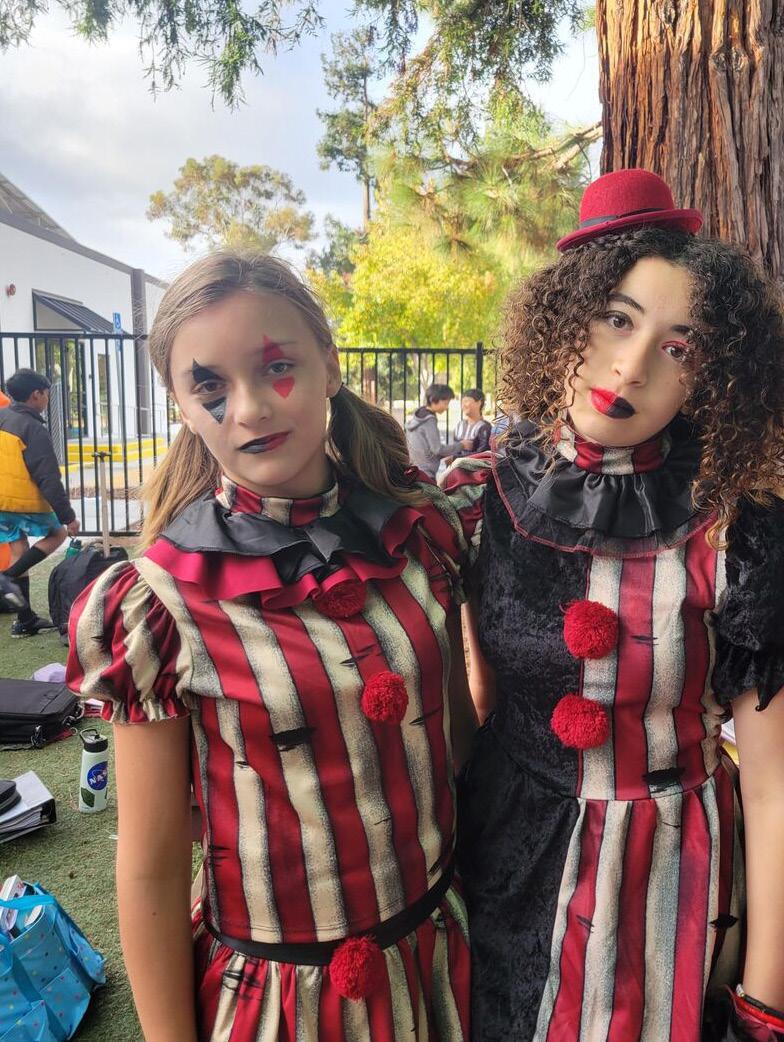
By Tycho Young Feature Editor
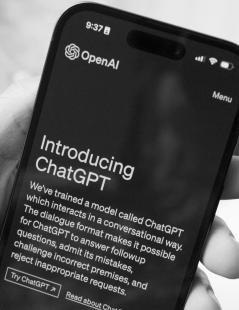
ChatGPT is a revolutionary technology, and it has certainly impacted education. But now that the dust has settled, ChatGPT doesn’t seem like such a big issue anymore. Still, big questions about ChatGPT’s implications in education have gone unanswered, and while we may think that the worst of it has passed, many unseen challenges are yet to come.
Could this transformative technology give everybody a free and personal tutor? Sal Khan, the founder of the free
By Hemangi Ghimire and Natalie Luo
Staff Writers

Starbucks is always flooded with customers eager to try the latest additions to the menu. The two newest drink releases, Glinda’s Pink Potion and Elphaba’s Cold Brew, are based on the upcoming film release of the hit Broadway musical, WICKED. These additions to the Starbucks menu may be exciting, but are they actually good?
Glinda’s Pink Potion looks almost exactly like the Starbucks Dragon Drink. What sets it apart is the pale pink foam on top, with chunks of dried dragon fruit floating in the middle. The drink transitions from a lighter shade at the bottom to a more vibrant pink in the middle. There is no gradience with the colors, leading to a contrasting change between the colors of the drink and the foam. Hemangi thought the drink looked pretty, noting that the shades of pink worked well together. However, the sharp contrast between the colors slightly lowered her score to 8/10. Similarly, Natalie thought the appearance of the drink was aesthetically pleasing and rated it 8/10.
The first sip of Glinda’s Pink Potion delivered a burst of sweetness, domi -
By Shubh Bachkethi Staff Writer
BASIS Independent Fremont Upper is a small private school that, despite its growing list of accomplishments, is relatively unknown to the broader community. When BIFU students meet students from other schools, the question “Where do you go to school” inevitably arises. When a BIFU student responds with “I go to BASIS Independent Fremont Upper,” the listening party either says, “What school is that?” or says “Good luck.”
Despite the Lower School opening in

online education platform Khan Academy, certainly thought so. Nearly a year ago, Khan Academy launched beta testing of their AI tutor product, Khanmigo, a cheap subscription service that would create a personalized learning experience for anyone, prompting students to think about the question, rather than giving away the answer.
Inevitably, as ChatGPT grew widespread, students began using ChatGPT to do their schoolwork. ChatGPT was like Google on steroids. Not only would it provide you with facts and information, but its reasoning capabilities meant it could answer an infinite array of questions, albeit not with great accuracy. Companies like Turnitin and GPT-Zero quickly mounted efforts to combat AI cheating and detect AI in student work, which seemed largely successful in catching AI. However, under the surface, these detectors were not ubiquitously effective and often turned up false positives, inciting controversies in schools and universities.
These days, student usage of ChatGPT is not so obvious. While detection technology has improved, the use of AI for schoolwork is easier and more applicable than ever. With developments in AI modality, ChatGPT can use its vision capabilities to analyze diagrams and read text, making it easier than ever to simply take a picture of a homework question and receive the answer, without having to type it out or provide
nated by artificial dragonfruit flavors and a faint strawberry aftertaste. There were small hints of coconut as a result of the coconut milk used to create the drink, but the taste of it was barely there. Strangely, Hemangi noticed the taste of granola while eating the dried fruit. She rated the drink’s taste 8/10. Natalie found the flavor to be similar to the Starbucks Dragon and Pink Drinks but thought it was too sweet, rating it 7/10.
This drink smelled like fruits, but the strawberry aroma overpowered the other fruity notes. Hemangi described the strawberry aroma as calming and delicious, rating it 10/10. The smell of the drink reminded Natalie of preserved fruits. She described it as a pleasant and fruity smell but found it difficult to pinpoint which fruit it was, resulting in the rating of 6/10.
The texture of Glinda’s Pink Potion was really fun. The thick foam gave it a satisfying mouthfeel, and the viscous liquid was enjoyable to drink. The pieces of dried dragon fruit in drink were also fun to crunch on. Hemangi thought the foam made it slightly harder to taste the full flavor of the drink, resulting in a rating of 8/10. Natalie had a different opinion: she appreciated how these two factors complemented each other, rating it 9/10.
Transitioning over to Elphaba’s Cold Brew, the drink stands out with its pistachio-green hue and subtle dark coffee streaks. Hemangi found the drink visually appealing, noting that although there is not much going on with its appearance, that also ensures there is nothing to deduct points for. She rated the appearance of this drink 8/10, tying it with Glinda’s Pink Potion in the appearance category. However, Natalie
2016, our Upper School opened in 2019. Immediately after that, the COVID-19 pandemic arose, and schools were forced to shut down and go online. Even though the pandemic is no longer considered a public health emergency, its effects are still felt today. As of 2024, our school is virtually unknown when compared to schools like Harker, Stratford, or even our sister school BASIS Independent Silicon Valley (BISV). I believe this is due to the pandemic preventing our school from establishing a stronger presence and gaining recognition. Other schools have also been around for longer, so it could simply be a matter of us being relatively newer.
However, BIFU is steadily gaining visibility thanks to the remarkable achievements of its students. Comparisons to BISV are inevitable, given its
context.
Furthermore, recent AI models have also significantly improved their reasoning capabilities, allowing them to answer questions in areas such as mathematics and physics, where previous models would fail. OpenAI’s model performs comparably to many of the brightest high school students in the country. While previously thought impervious to AI cheating due to the advanced reasoning required, AI usage now threatens the integrity of many academic olympiads.
Since AI is used in the real world, why shouldn’t students be able to prac -
tice working this way? Well, the simple answer is that when students use AI, they are only shortchanging themselves of opportunities to learn. While a student may believe that they will never use the content learned in a particular class, the critical thinking skills gained are invaluable. When a student uses AI to assist them, the result on paper is the same, but the result for the student is not. School, especially before college, exists so that students can learn how to learn—and with AI learning for so many students these days, the education of the next generation is uncertain.

preferred the appearance of Glinda’s Pink Potion, mentioning that the look of Elphaba’s Cold Brew reminded her of vomit. She rated it a 7/10. The drink started off with a slight matcha taste, but a strong peppermint flavor quickly overpowered it, with subtle hints of coffee adding a slight bitterness. Hemangi really loved the combination of peppermint and coffee, rating the taste of this drink 9/10. The mix of the peppermint and coffee reminded Natalie of chocolate peppermint cookies, but she found the taste of the coffee to be barely there due to the strong peppermint flavor. She also rated it 9/10.
Elphaba’s Cold Brew smelled strongly of peppermint, with a hint of matcha and coffee. Hemangi rated it a 9/10 due to peppermint’s association with happy memories. Natalie also found the smell pleasant and comforting but gave it a slightly lower score of 7/10.
Compared to Glinda’s Pink Potion, the texture of Elphaba’s Cold Brew was simpler. It had a normal and smooth flow with no foam. The texture didn’t present any flaws that would cost it points, but since it wasn’t particularly unique or memorable, it didn’t earn a perfect score. Hemangi rated the drink 9/10 for the silkiness and smoothness of the green liquid, while Natalie rated it 7/10 as the drink was nothing special but still decent.
Overall, we both enjoyed drinking Glinda’s Pink Potion and Elphaba’s Cold Brew. It’s difficult to pick a clear favorite, as they were closely matched across all categories. The choice of which drink to order would ultimately depend on our mood. We would happily recommend trying both drinks to see which suits your taste. For Heman -
longer history and stronger reputation. I have a friend who transferred from BIFU to BISV in 7th grade and often spoke of the academic rigor there. While BISV is known for its challenging curriculum, BIFU offers a balanced environment that is often misunderstood. As a student at BIFU, I can attest that while some classes are demanding, the workload is generally manageable—even for students like me who are active in multiple clubs.
Unfortunately, misconceptions about BIFU persist. Some believe that students here are “snobby” or “rich” simply because it’s a private school. While we are shielded from certain challenges faced in traditional public high schools, such as issues with drugs, BIFU students are far from the stereotypes often associated with private schools. The root of these misunderstandings
gi, Glinda’s Pink Potion scored a total of 34/40, while Elphaba’s Cold Brew edged ahead with 35/40. For Natalie, the two drinks were evenly matched, each earning a total of 30/40 points.
We also interviewed a few people to get their opinions on the new drinks. Although some students haven’t tried the drinks yet, they would like to.
“I would be willing to try both of the drinks but especially the pink one,” said Audrey Song (9), “Based on the color, the pink one is better, because I like pink.”
However, not everyone is eager to try these drinks because of their appearances.
“A nice, big glass of motor oil would be better because they both look absolutely disgusting,” said Mr. Loero, “Every time I go into Starbucks, I think less of myself. I would only go if I were truly desperate.”
Mr. Loreo has not tried either of the drinks, but he does not enjoy Starbucks in general.
There are other students who have tried the drink, but they gave a negative response when asked whether they would like to try the drink again.
“Probably not, because [Glinda’s Pink Potion] was too sweet, and I just think it is not really worth it,” said Alyssa Liu (9).
On the other hand, there are students who think the drink is amazing, but when asked the same question, they mentioned they would not try it again because of the price.
“Not really, because it’s overpriced, I would drink [Glinda’s Pink Potion] everyday if it wasn’t overpriced though,” said Sheldon He (9), “I would also try [Elphaba’s Cold Brew] if it wasn’t overpriced.”
lies in the school’s lack of visibility. It’s natural for people to form inaccurate opinions about something unfamiliar. But as BIFU continues to grow and evolve, it is taking steps to bridge the gap between itself and the traditional high school experience. For instance, the recent addition of a vending machine—a small but significant change—has been a hit among students and staff alike. These efforts reflect a conscious effort to make the school feel more familiar and accessible.
Even though us students are often unknown, we need to make ourselves known, and so in the end, it all boils down to what you do and what you say about our school. Let’s make BIFU known for what it truly is: a school with a strong foundation, a supportive community, and endless potential.
Go Yellow Jackets!
By Chen Ma Staff Writer
In the final weeks before the recent election, both the Democratic and Republican parties were at a stalemate once again. Both candidates took to social media as they had in the months before, pumping out collaborations with figures from Charli XCX with her “Kamala is Brat” campaign to having Bryce Hall speak at a Trump rally.
The various political memes created throughout both campaigns have now undoubtedly enshrined themselves in pop culture. As the dust settles from this election season, it’s clear that pop culture and politics are more inter -
twined now than ever, ranging from Donald Trump x Elon Musk to Kamala Harris’s surprise appearance on SNL.
“I think it’s interesting [that] politicians are trying to connect with voters and the common people,” said Sahitya Pallapothu (10), “like with Brat Kamala she’s relating to Gen Z or people our age.”
This election represents a new reality for voters, in which politics have permeated into every aspect of their internet use. Social media played a pivotal role as the rush for the Gen Z vote began. Some students said the movement is a significant shift that has normalized discussions among


younger people about civic engagement, while others said it could take away from the seriousness of politics.
“I don’t really see the [memes] online” said Alyssa Liu (9), “but I wouldn’t let a famous person’s opinion affect mine.”
The internet has created a space where the two can coexist. Whether or not it’s viewed positively, one thing is certain: the 2024 election’s social media campaigns left a lasting mark on future election seasons. It has set a new precedent, and shown just how much the political landscape has changed to fit in the modern, technological era.
But will this trend continue? Harris noticeably appealed towards younger voters in her past campaign, featuring a social media team of Gen Zers.
By Katherine He and Josh Peter Editor-In-Chief and A&E Editor
Sitting in the streaming room of his Los Angeles mega-mansion is Kai Cenat, a multi-millionaire live streamer and the most subscribed to streamer of all time.
Although based in New York, Kai Cenat is temporarily living in California for a “subathon”, or “Mafiathon 2” as he calls it, a challenge in which a streamer must keep streaming based on the levels of monetary support they receive from viewers. In his previous “Mafiathon,” he surpassed Lud -

wig Ahgren’s former record of 283,066 subscribers with his own record of a staggering 306,621 subscribers.
Since then, his record has been broken by VTuber — a content creator who uses an animated visual persona as their online appearance — Ironmouse, in October with 326,252 subscribers.
Ironmouse, the 2023 winner of the Game Award for Content Creator of the Year, is a Puerto Rican-American VTuber and singer who primarily streams content via Twitch. After her diagnosis with common variable immune deficiency (CVID), she felt isolated and eventually turned to streaming, enabling her to connect with people all around the world.
“I watched a few of her streams and I think she’s very funny, so maybe that’s why,” said Emma Ma (9). “Also, she might be comforting to some people.”
Because of this, Kai Cenat has firmly decided to reclaim his record through Mafiathon 2. His primary goal of beating Ironmouse’s record was achieved on November 11th, and he continues to stream, hoping to gain more subscribers.
Donations and watchtime on Ce -
nat’s Mafiathon 2 continue to skyrocket because fans are incentivized by his proposal: donating 20% of the stream’s profits to building schools in Nigeria. With his popularity, his campaign has the potential to grow and make an impact.
“He’s one of the most popular streamers in the world,” said Aadit Gupta (7). “I remember there was a time when people went crazy for Kai Cenat because he was in New York or something, even on PS5.”
Many people also choose to tune into Cenat’s streams because of his interesting collaborations, with Darius Lo (11) citing his work with American rapper Ice Spice. The streamer has continued to have these partnerships through Mafiathon 2: another popular female rapper, GloRilla, surprise featured. The collaboration was a shock to many because the rapper was known to have blocked Cenat after he bashed her 2023 song “Cha Cha Cha.”
In a world where online communities have become an integral part of people’s lives, Kai Cenat’s Mafiathon 2 demonstrates how streaming can bring people together across dis -
However, by purely focusing on the younger vote, the Harris campaign may have neglected other key demographics. Her loss of the popular vote against Trump may demonstrate a shift back to established voters. “Even though you appeal to big name influencers you don’t know how many people actually follow along,” said Maya Chitor (10). “In addition, younger voters are already more likely to vote for Harris.”
In general, the role of humor in politics will likely stay uncertain in the near future. As Gen Z’s influence grows, and the voter eligible population increases, the convergence between entertainment and politics may distort further, and could single handedly redefine American politics.
Photos by SNL and Forbes

tances, cultures, and backgrounds. The immense turnout, driven by fans’ support and his commitment to giving back, shows that these streams go beyond entertainment — they’re about shared experiences, interactions, and collaborations that resonate with viewers worldwide. Streamers like Kai Cenat, Ironmouse, and other VTubers have been able to build connections with viewers in emotional and compassionate ways through virtual models or personas. They have greatly changed streaming for the future through their endless efforts to entertain, expand, and excite.
‘THE
‘THE ROBOT’
By Nick Lin and Brandon Yu Staff Writers
The How to Train Your Dragon producers have created a truly touching film that beautifully weaves together themes of generosity, parental love, and the search for belonging: The Wild Robot. At the heart of it all is Rozzum Unit 7134, or Roz, voiced by Lupita Nyong’o, a robot who embarks on an extraordinary journey.
When Roz becomes stranded on an island, the animals see her as a monster and reject her. But through her selflessness—saving them from a brutal winter and raising Brightbill, an orphaned gosling—Roz slowly earns their trust and
respect. Her actions bring the animals together, forming an unlikely family. Even Fink, a reclusive fox, is changed by Roz’s influence and joins her to save the group. When Brightbill learns Roz accidentally caused his family’s death, he forgives her, showing that love and understanding can overcome even the deepest wounds.

We give this film a solid 9/10. It’s emotionally powerful and packed with meaningful life lessons, all while to movie-goers all ages. One quote that stuck with us was one of Paddle the Beaver’s:
“Failure is not the point, but the process is the art.”
It teaches viewers that it’s important to value what we learn and gain from working hard, rather than focusing on one negative result. It’s moments like these that give the movie such depth.
If you haven’t already, we recommend checking out the book series that inspired this film. This movie is a standout—deeply moving and unforgettable. It’s something we’d recommend to anyone.

By Sarah Wu
Opinion Editor
After an intense week of competit ion, the BIFU middle school Olympics have come to a close. Spanning four days, from November 12 to November 15, the games consisted of three events: a relay race, soccer, and volleyball. The competition featured teams from different grade levels, with Cobalt and Nickel representing the 6th grade, Radon and Xenon for the 7th grade, and Niobium and Palladium for the 8th grade.
Representatives from each grade went head-to-head, facing off in teams of 5. Competition was fierce. An intense soccer matchup between Xenon and Radon led the game into a penalty shootout, ending with Xenon winning 2 to 0. Xenon, Palladium, and Nickel advanced to the playoffs. Eventually, Nickel emerged victorious based on a total goal deficit system, where a team gains or loses as many points as goals they won or lost by.
Students paired up in teams of 2 for the relay race, taking turns sprinting across the blacktop. As anticipation built up, excited whispers were heard from students as they planned and strategized.
Each group was given only one chance to complete their event. After the race, one participant and her partner recounted their performance
By Brandon Yu Staff Writer
in the relay race, reflecting on improvements they could have made.
“It was really exhilarating and fun,” said Zehra Araci (6). “I think that if we had a second try we should [alternate].”
In the end, Radon took first place in the relay by a narrow margin of 0.2 seconds.
The games were a heartwarming display of teamwork and support, as the players clapped and cheered for their teammates with every point scored. The volleyball players celebrated as Palladium triumphed in volleyball winning by an astonishing lead of 22 to 2 over Cobalt.
The success of the event was made possible through the efforts of the members of the NJHS. Organizing the events was not an easy task, requiring coordination from a team of multiple students in charge of keeping track of scores, with Sowmyan Narayanan (8) and Akshaj Arora (8) refereeing Relay and Volleyball. There were some struggles along the way, including brief pauses to the games.
“There was also limited support and time with only 3 people refereeing an entire tournament in only 3 days.” said Arjun Pandey (8), one of the event organizers. Despite the setbacks, the games were able to run smoothly, complete with an award ceremony for the winners.
“It just took a long time and a lot of hard work to get everything set up.” said Pandey, “But I’m happy that everyone liked the event and had fun.”
Other students s also expressed this
sentiment, reflecting that they enjoyed the games and felt a sense of school spirit through their participation.
“Overall, it was a very fun experience,” said Ashley Zhang (6) “I wish I could do it again.”


By Olivia Ma Editor-In-Chief
In Connections, you are given 16 words arranged in a 4x4 grid. Your goal is to group the words into 4 sets of 4 based on a common theme or connection. Once you've made all the correct groups, you win the game. Answers can be found by playing via the QR code to the right.
Scan to play:


Editors-in-Chief: Katherine He, Julee Jiang and Olivia Ma
Section Editors: Angela Cao, Aarna Kamath, Pooja Kanthala, Vera Lin, Emma Ma, Sheil Mody, Sachit Parekh, Selena Peng, Josh Peter, Thanisha Thambidurai, Ailsa Wu, Sarah Wu, Vincent Yang, and Tycho Young
Staff Writers: Shubh Bachkethi, Angela Cao, Aaron Ely, Hemangi Ghimire, Aarna Kamath, Pooja Kanthala, Vera Lin, Natalie Luo, Chen Ma, Emma Ma, Sheil Mody, Sachit Parekh, Selena Peng, Josh Peter, Thanisha Thambidurai, Ailsa Wu, Sarah Wu, Vincent Yang, Nick Yin, Tycho Young, and Brandon Yu
Graphic Design: Katherine He, Julee Jiang, Olivia Ma, Selena Peng, and Ailsa Wu

Thank you for reading the third issue of the fourth volume of The Yellow Pages! We hope you enjoyed reading the issue as much as we enjoyed the process of creating it! If you have any comments, suggestions, questions, or notice any mistakes in our newspaper, please contact bifyellowpages@gmail.com . We will include corrections for any errors and typos in the following issue.